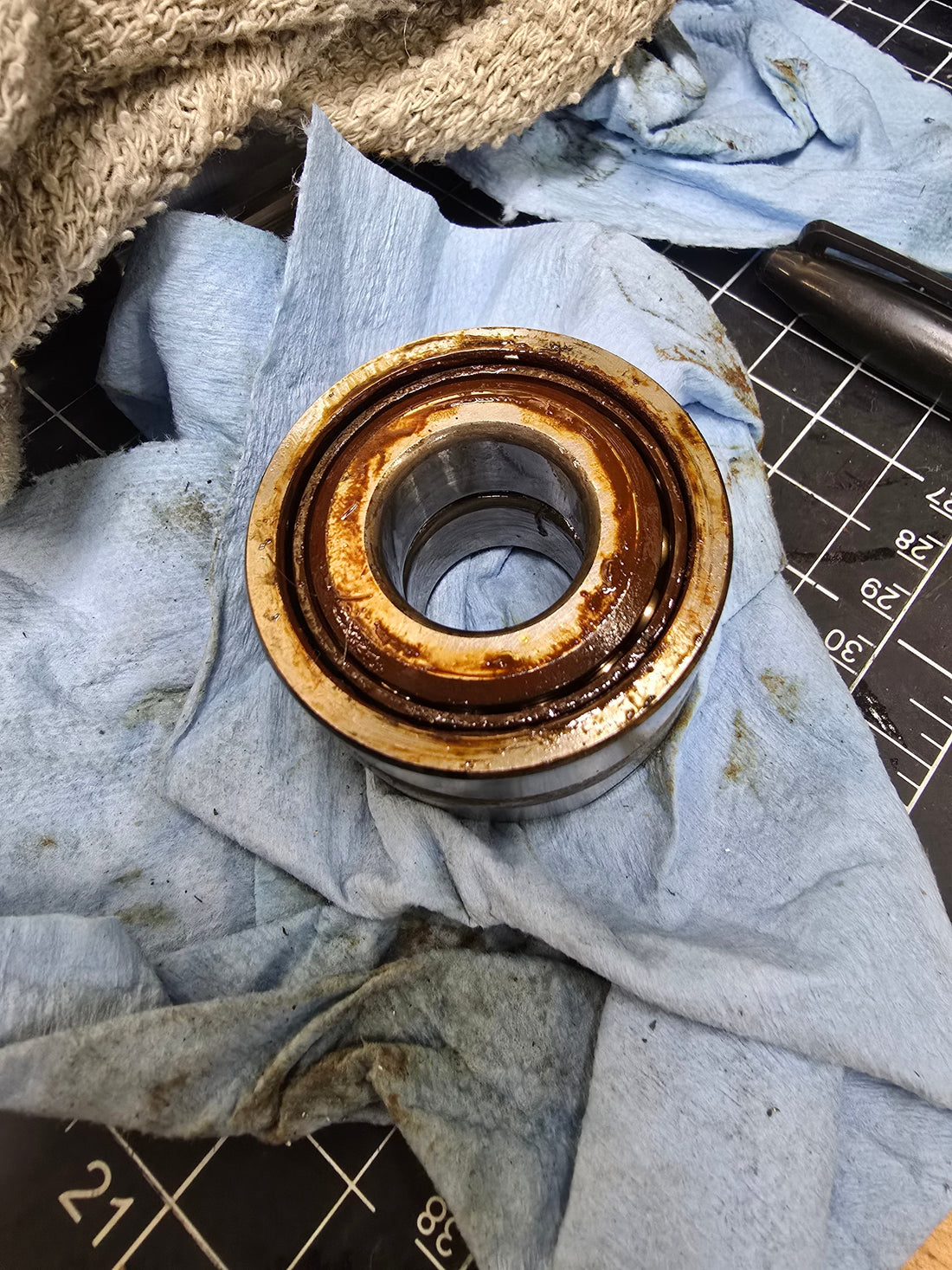
Bearings, really nice bearings
Share
So I admit, these are not the nice ones. These are the ones I pulled out of my Brother CNC mill. When I got the machine I new there would be some needed upgrades and maintenance done. Some of it was important some of it not so much. I put off having to replace these because at the time they were only making noise and not showing any signs of wear and the machine was holding tolerance. I didn't know they looked this bad.

I got annoyed by the noise finally AND I have been running into some strange tolerance issues. I put an indicator on the table and with a good push and a grunt I was able to move the table around with just my hands. Granted it was only a few thousands of an inch but in the machine world this is BAD! Especially on a machine that can run into the 0.0002" tolerance range.
At first I thought it may be a motor coupler or something else but after tearing into it I found these nasty, what use to be, bearings. These are no run of the mill ball bearings. NSK proudly calls them Super Precision Angular Contact Bears or The NSKHPS TAC-series. As you should already know, the longer the name, the bigger the price. These come in at about $400 a piece and you have to have a matching pair for both X and Y axis. That's 4 bearings total.
I started with the X axis and followed the 25 year old translated version of a manual that seems to be more of a general manual for a few different machines built around the time of this one. The mechanics is no problem. Just loosen some bolts, remove the parts, clean everything really well and then reverse order. The bearings require a bit of finesse to achieve what is called preload which the manual makes NO mention of.
Now we move on to the fun part! Since we have un-coupled the motor from the ball screw, the encoder has lost it's position. I did everything I could to keep it as close as possible but that's the best that can be done. Once reassembled you need to go into the machine parameters, re home it and then set axis back to a know precise position. This machine uses a Grid Shift method. It took a few tries to get the machine to home but after it did it was just a matter of making some precision measurements using the probe to tell the machine where it needs to be. This worked okay on the X axis but the Y axis gave me some fits. I guess I may have bumped it or turned the motor too far when reassembling. It wouldn't home. Even after following the manual to the letter. I tried resetting the home position and it made no difference. Reset the grid shift, nothing. It was after midnight and I was out of coffee, out of patience and out of expletives.
Here's the fun part. I just asked ChatGPT. Yup! Gave it the machine I'm working on, what my errors were and what I had already done and it gave a 7 step plan to diagnose and get the machine back in order. It suggested I turn the motor a few degrees at a time with it un-coupled and then tighten it back and check home. I did this 3 times and BAM! it found it's encoder position. Then it was just back to precision measuring to tell it where it needs to be, set the Grid Shift and all was right with the world.
Were there a few choice words mummered under my breath? No! I probably could have woken the neighbors if we had any. The manual made me so angry since it had nothing to help recover the machine but also had wrong information. Google isn't real helpful as this machine is older than Google is. It's crazy just how useful these large language models are. Thank you GPU. You're the only one that could have help me at 1am and you came through.
Now I just need to install the support bearings on the other side of the ball screw and this thing will sound like a whisper in the wind. It fixed my tolerance issues and makes me super happy. My guess is that this machine has set outside for a period of it's life and been rained on. There was what seem to be a water line inside the motor housing that was impossible for coolant to get to unless the machine was on it's back. It would also explain why the table had so much surface rust when I first got it. It came from a humid area of the south but this was more than that.
That's all I got for now. Gotta make more parts and start digging a trench cause I'm about to run a water line to the shop... it's time.
